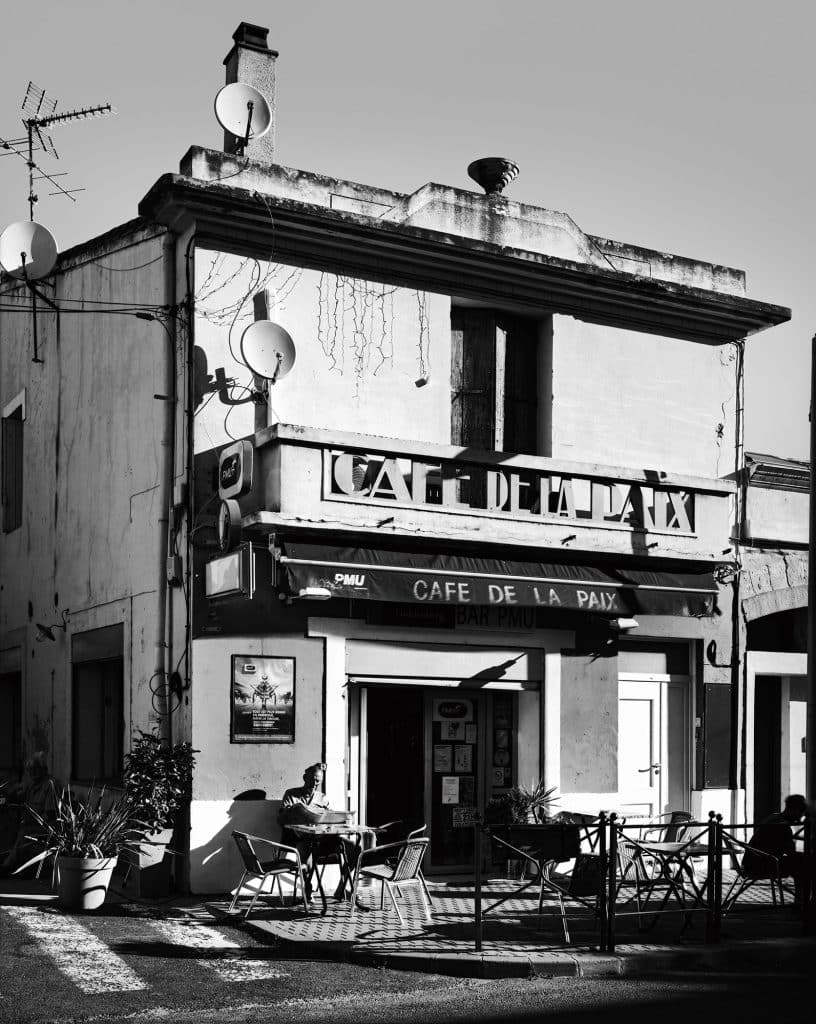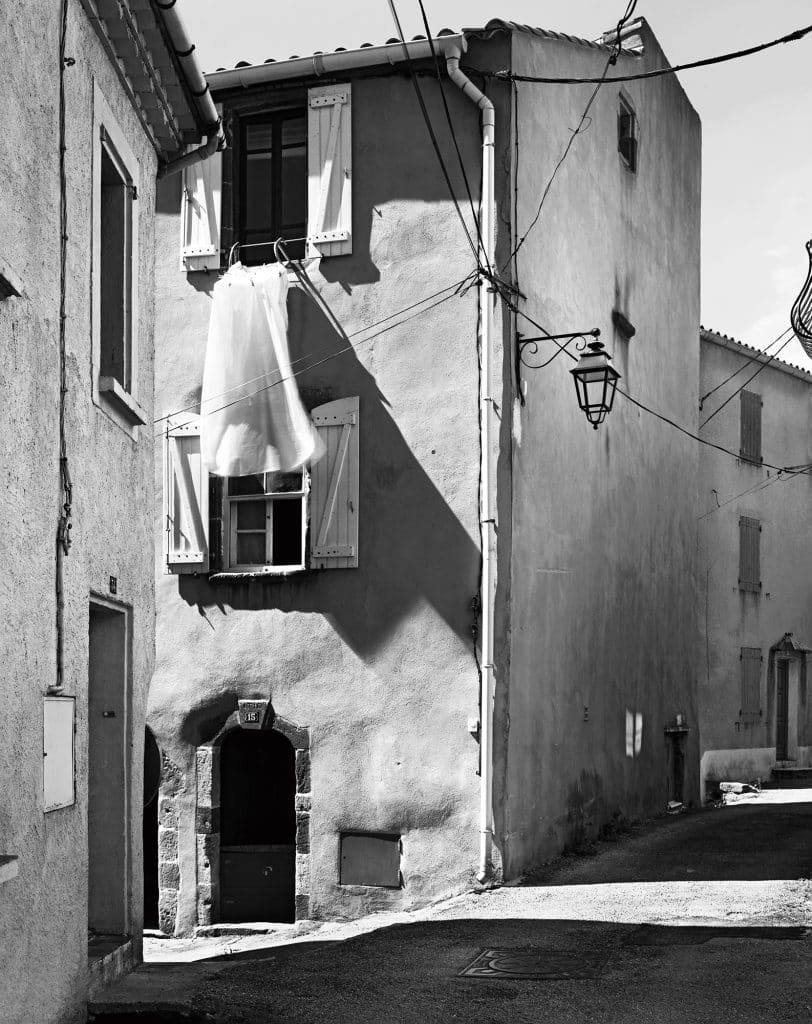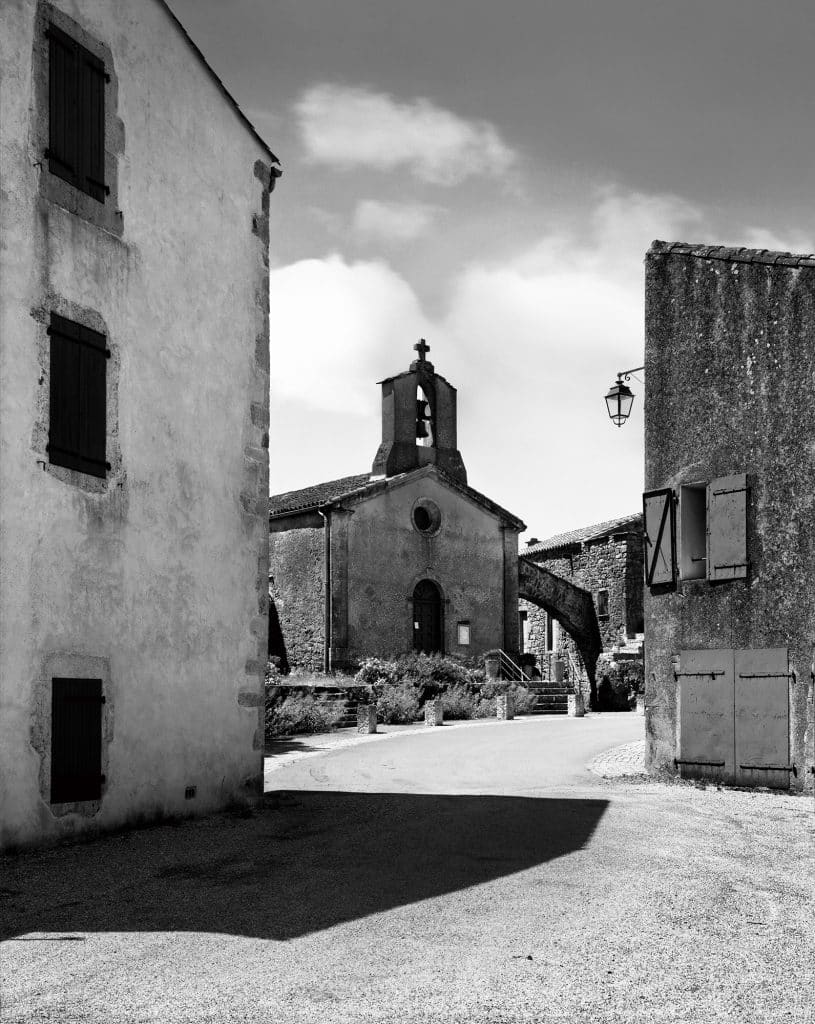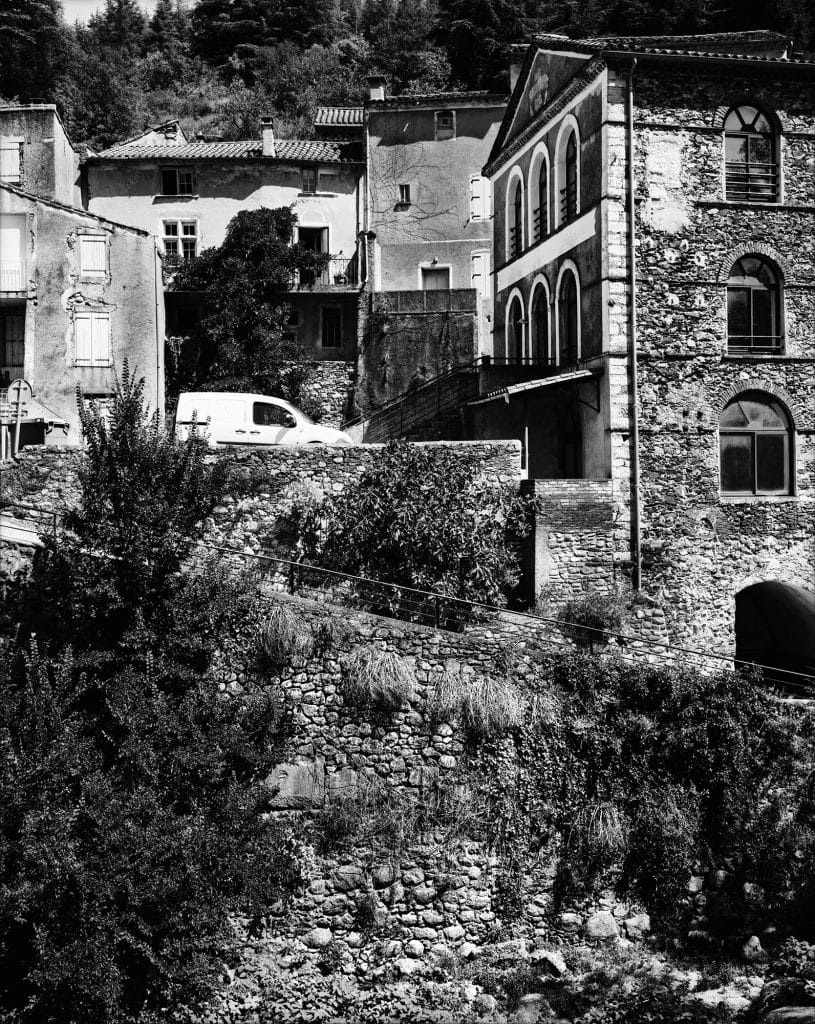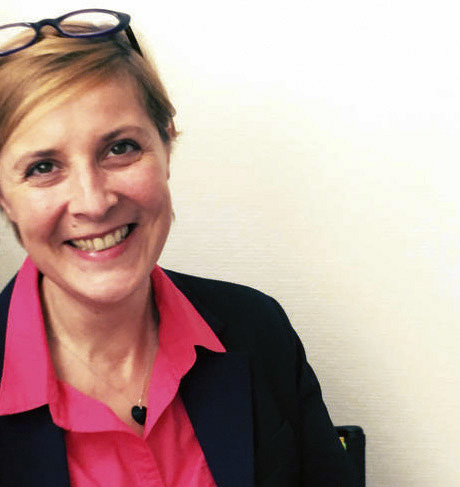From the start of the exhibition, we are ushered into the photographer’s workshop: in an area delimited by an orange background, there is a regional map showing the villages, and images pinned to the wall offer a glimpse of the behind-the-scenes preparations, sometimes with handwritten annotations: “take notes,” “take Polaroids,” “buy postcards.” Then there are photos of the equipment: a stopwatch, a magnifying glass, etc.; there is a backlit table with “film shots”; and books with evocative titles — like Rural and Repérages — are arranged in a display case. Lastly, there is a screening of Claudine Nougaret’s film Les paysans, showing the photographer at work.
This “backstage” passage, to borrow the phrase from Gilles Mora, director of the Pavillon Populaire and curator of the exhibition, comes with a few prints from earlier series, also devoted to the French territory. Raymond Depardon has thoroughly photographed France many times over! Starting with the Garet farm, where he grew up in a family of agriculturists, and which he left aged 16 to go to Paris and realize his dream of becoming a photographer. These color images taken with a view camera date from the 1980s. They were made as part of the famous Datar Photography Mission, a nationwide project aimed at recording the country’s transformation. Between 1983 and 1989 twenty-nine photographers — mainly French, such as Robert Doisneau, but also foreign, like American Lewis Baltz — participated in the Mission.
A co-founder of the Gamma agency in 1966, Raymond Depardon joined Magnum Photos in 1979. The 1980s were a pivotal period in his career: he distanced himself from reporting to focus on less factual photography, no longer geared toward the short term and quick turnaround characteristic of news photography. With the switch to a view camera, his aesthetic had also changed. His interest had now shifted to the extended, or “weak,” as he put it, temporality of the landscape. This was a counterpoint to the decisive moment. These were images where nothing happens.
The preamble to the exhibition also includes black-and-white contact sheets of personal, or family photographs, which feature Depardon’s wife and children in the 1990s. These images are surprising: the incursion into the intimate sphere reveals how much emotion had become a factor in his work. And, lastly, there is a sampling of his great saga, La France, made in the 2000s, which was the subject of an exhibition at the Bibliothèque Nationale de France in 2010. Over several years, Depardon traveled around the country in a truck, in which he slept, taking back roads to photograph “France seen through its sub-prefectures,” as he put it, referring to small towns located at the outskirts of larger ones.
The second gallery, painted yellow, showcases the series “Communes”. Here, says Gilles Mora, “Depardon is a landscape photographer, in complete antithesis to street photography.” The subject is rurality and its eternal, or at least atemporal, aspect. Large, vertical black-and-white images cover the four walls of the gallery, encircling the viewer. The effect is guaranteed. These frontal views depict small southeastern French towns with lilting names. They are part of a group of 280 villages in which shale gas extraction had been authorized. Following a massive wave of protests, the project was scrapped in 2015. “Intrigued, I wanted to photograph them with my view camera,” explained Depardon, jokingly pointing out he didn’t get there by chance. “My wife was born in the area. She is the one who introduced me to it. I’m just an afterthought here.”
In the photos, stones and facades dominate: bakery, school, town hall, grocery store, fountains… Raymond Depardon crisscrossed these little streets in August and October 2020, hoisting his bulky view camera on his back despite his 79 years. “I made no more than five images per day, in duplicates; everything went fast enough, I did a little bit of location tracking but not too much, since I can’t be galloping anymore! And I work without an assistant.” Is the absence of humans a sign of the desertification of the countryside widely deplored in the media? Raymond Depardon doesn’t think so: “These are not abandoned places, believe me, things are still moving.”
Raymond Depardon, “Communes”, February 16 to April 24, 2022, Pavillon Populaire, Montpellier.
Catalog, bilingual French/English, Fondation Cartier pour l’art contemporain, €45, 128 pp.

